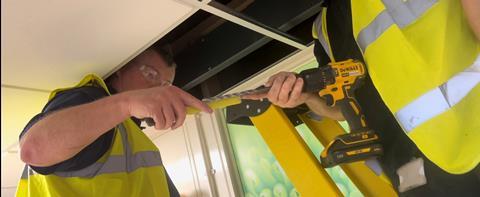RSH tells affordable housing bosses they need to know if problem concrete present in their homes
The social housing regulator has written to landlords warning them to be on top of the risks posed by a potentially dangerous form of lightweight concrete in historic homes.
The RSH said in the missive, sent to all affordable housing landlord bosses, that councils and housing associations needed to find out if their homes contain Reinforced Autoclaved Aerated Concrete, known as RAAC, and, if so, assess what risks this posed to tenants.

The letter said landlords needed to know “whether homes contain RAAC components and the risk to tenant safety arising from these”.
The note also stated that ensuring the safety of tenants “should be the highest priority for every landlord”, and reminded landlords that failure in this regard meant non-compliance with the regulatory standard.
However, repeating comments made earlier this week to Housing Today, the RSH also said that it believed that “RAAC is not widespread in social housing”, despite fears raised by a number of consultants in the wake of the closure of over 100 schools last week.
Building surveyor Rapleys said earlier this week that work it had done surveying public buildings suggested that between 5-10% of all public buildings – including social housing – built in the 1950s-1980s, was likely to contain RAAC.
>> See also Calls for social landlords to start ‘urgent’ RAAC inspection programme
>> See also Boards rubber stamp Sovereign and Network merger
Despite playing down the risk overall, the RSH said RAAC “may be present in a small number of buildings dating from this period, particularly in flat roof and panel structures.”
The RSH said landlords that discovered RAAC in their estate needed to develop “proportionate mitigation and remediation plans” and seek “suitably qualified advice” to deal with the problems, as well as communicate fully with tenants where necessary.
Earlier this week law firm Winckworth Sherwood said housing associations should “urgently check” building specifications and drawings for the use of RAAC, and commission “immediate structural surveys” where it is found.
Neither the department nor the regulator has answered Housing Today’s questions regarding the exact extent of RAAC present in the social housing estate.











No comments yet